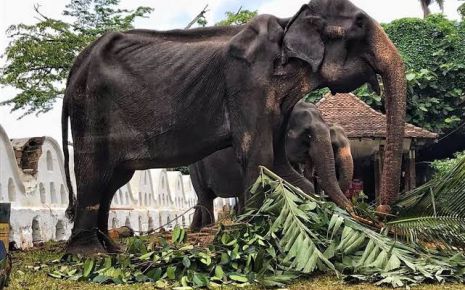Post Mortem Examination Challenges
Performing post-mortem examinations can be emotionally draining for both the
pathologist and the family of the deceased. Striking a balance between the
scientific investigation and showing respect for the deceased and their loved
ones necessitates sensitivity and ethical considerations.
Legal and consent issues pose a significant challenge in obtaining appropriate permission for post-mortem examinations, particularly in cases where the cause of death is uncertain. The intricacies of legal frameworks and cultural sensitivities must be navigated carefully.
Technical challenges also arise in post-mortem examinations, as they require meticulous attention to detail and specialized techniques. Factors such as advanced decomposition, trauma, or pre-existing medical conditions can complicate the process and interpretation of findings.
Time constraints add to the complexity of post-mortem examinations, as timely completion is crucial for legal proceedings, public health investigations, and providing closure for the family. However, logistical issues, limited resources, and caseloads can present obstacles in meeting deadlines.
In complex cases, collaboration with other medical specialists, forensic experts, law enforcement, and legal professionals may be necessary. Effective communication and coordination among these parties can be challenging, but it is essential for accurate conclusions.
Maintaining rigorous standards of practice, documentation, and quality assurance is crucial in post-mortem examinations. Ensuring the accuracy and reliability of findings while adhering to protocols and regulations requires diligence and attention to detail.
Addressing these challenges requires a multidisciplinary approach, continuous training, and strict adherence to established guidelines and ethical principles.
When a post-mortem examination fails to ascertain the cause of death, it poses a perplexing challenge to forensic experts, investigators, and families seeking closure. In such instances, the intricate interplay of factors ranging from the condition of the body to the limitations of forensic science can thwart efforts to pinpoint the precise cause of death. This essay delves into the complexities surrounding cases where the cause of death remains elusive despite thorough post-mortem examination, exploring the various reasons, challenges, and implications inherent in such situations.
Forensic pathology, the branch of medicine concerned with investigating the cause of death, relies heavily on post-mortem examination to unravel the mysteries surrounding fatalities. Through meticulous examination of the deceased's body, forensic pathologists aim to identify any injuries, diseases, or abnormalities that may have contributed to or caused death. However, despite advancements in medical technology and forensic techniques, there are instances where the cause of death remains elusive, defying conventional diagnostic methods.
One common scenario where the cause of death cannot be determined definitively is when the body is in an advanced state of decomposition. Decomposition is a natural process that begins shortly after death, as the body undergoes various biochemical changes that lead to its eventual breakdown. In cases where decomposition is extensive, forensic examination becomes exceedingly challenging, as crucial evidence may be obscured or degraded. The extent of decomposition can vary depending on factors such as environmental conditions, temperature, and the presence of scavengers, making it difficult to ascertain the cause of death accurately.
Similarly, traumatic injuries, such as those resulting from accidents or violence, can complicate efforts to determine the cause of death. While some injuries may be readily apparent during post-mortem examination, others may be subtle or internal, requiring specialized imaging techniques or invasive procedures to detect. Additionally, distinguishing between injuries sustained before death (antemortem) and those occurring after death (postmortem) can be crucial in establishing the sequence of events leading to death.
In cases involving suspected poisoning or drug overdose, toxicology analysis plays a pivotal role in determining the cause of death. However, identifying toxic substances in the body can be challenging, particularly if they are present in trace amounts or if the deceased had a complex medical history involving multiple medications. Moreover, the interpretation of toxicology results requires expertise in pharmacology and forensic toxicology to differentiate between therapeutic levels, accidental exposure, and deliberate poisoning.
Furthermore, certain medical conditions or diseases may manifest in ways that mimic natural causes of death, complicating the diagnostic process. For instance, cardiovascular diseases such as myocardial infarction (heart attack) or stroke can sometimes present with nonspecific symptoms or no external signs of trauma, making them challenging to detect during post-mortem examination. Similarly, sudden unexpected deaths in infants, known as sudden infant death syndrome (SIDS), may defy explanation despite thorough investigation, leaving grieving families grappling with uncertainty.
The limitations of forensic science, coupled with the inherent variability of human biology and pathology, underscore the complexities involved in determining the cause of death. Forensic experts must navigate a myriad of factors, from the condition of the body to the availability of forensic evidence, in their quest for answers. Moreover, the pressure to provide closure for grieving families and accountability in legal proceedings adds another layer of complexity to the investigative process.
In cases where the cause of death cannot be determined definitively, forensic pathologists may issue a verdict of "undetermined" or "indeterminate" cause of death. While this designation acknowledges the limitations of forensic science and the absence of conclusive evidence, it can be deeply unsatisfying for families seeking closure and justice for their loved ones. Moreover, in legal proceedings, the lack of a definitive cause of death can complicate matters, as it may hinder efforts to prosecute perpetrators or establish liability.
The implications of an undetermined cause of death extend beyond individual cases to broader issues of public health, safety, and forensic practice. Identifying trends and patterns in fatalities is essential for identifying emerging threats, implementing preventive measures, and informing public policy. However, when the cause of death remains unknown or ambiguous, it hampers efforts to address underlying causes and mitigate risks, potentially jeopardizing public health and safety.
In light of these challenges, efforts to enhance forensic capabilities, standardize investigative procedures, and promote interdisciplinary collaboration are paramount. Advancements in imaging technology, such as computed tomography (CT) and magnetic resonance imaging (MRI), offer new avenues for investigating internal injuries and identifying subtle abnormalities. Similarly, advances in molecular biology and forensic genetics hold promise for uncovering genetic predispositions to certain diseases or identifying markers of poisoning or drug intoxication.
Moreover, fostering partnerships between forensic experts, medical professionals, law enforcement agencies, and other stakeholders is essential for enhancing coordination and information-sharing in death investigations. Collaborative initiatives, such as regional or national forensic pathology networks, can facilitate the exchange of expertise, resources, and best practices, ultimately improving the quality and reliability of death investigations.
In conclusion, cases where the cause of death cannot be determined by post-mortem examination present formidable challenges to forensic experts, investigators, and families seeking closure. Whether due to advanced decomposition, traumatic injuries, toxicological complexities, or underlying medical conditions, the elusive nature of death defies easy explanation. Nevertheless, through ongoing research, technological innovation, and interdisciplinary collaboration, the forensic community continues to strive towards a deeper understanding of mortality, recognizing that even in the face of uncertainty, every death deserves dignity, respect, and diligent investigation.
Written By: Md.Imran Wahab, IPS, IGP, Provisioning, West Bengal
Email: [email protected], Ph no: 9836576565
Legal and consent issues pose a significant challenge in obtaining appropriate permission for post-mortem examinations, particularly in cases where the cause of death is uncertain. The intricacies of legal frameworks and cultural sensitivities must be navigated carefully.
Technical challenges also arise in post-mortem examinations, as they require meticulous attention to detail and specialized techniques. Factors such as advanced decomposition, trauma, or pre-existing medical conditions can complicate the process and interpretation of findings.
Time constraints add to the complexity of post-mortem examinations, as timely completion is crucial for legal proceedings, public health investigations, and providing closure for the family. However, logistical issues, limited resources, and caseloads can present obstacles in meeting deadlines.
In complex cases, collaboration with other medical specialists, forensic experts, law enforcement, and legal professionals may be necessary. Effective communication and coordination among these parties can be challenging, but it is essential for accurate conclusions.
Maintaining rigorous standards of practice, documentation, and quality assurance is crucial in post-mortem examinations. Ensuring the accuracy and reliability of findings while adhering to protocols and regulations requires diligence and attention to detail.
Addressing these challenges requires a multidisciplinary approach, continuous training, and strict adherence to established guidelines and ethical principles.
When a post-mortem examination fails to ascertain the cause of death, it poses a perplexing challenge to forensic experts, investigators, and families seeking closure. In such instances, the intricate interplay of factors ranging from the condition of the body to the limitations of forensic science can thwart efforts to pinpoint the precise cause of death. This essay delves into the complexities surrounding cases where the cause of death remains elusive despite thorough post-mortem examination, exploring the various reasons, challenges, and implications inherent in such situations.
Forensic pathology, the branch of medicine concerned with investigating the cause of death, relies heavily on post-mortem examination to unravel the mysteries surrounding fatalities. Through meticulous examination of the deceased's body, forensic pathologists aim to identify any injuries, diseases, or abnormalities that may have contributed to or caused death. However, despite advancements in medical technology and forensic techniques, there are instances where the cause of death remains elusive, defying conventional diagnostic methods.
One common scenario where the cause of death cannot be determined definitively is when the body is in an advanced state of decomposition. Decomposition is a natural process that begins shortly after death, as the body undergoes various biochemical changes that lead to its eventual breakdown. In cases where decomposition is extensive, forensic examination becomes exceedingly challenging, as crucial evidence may be obscured or degraded. The extent of decomposition can vary depending on factors such as environmental conditions, temperature, and the presence of scavengers, making it difficult to ascertain the cause of death accurately.
Similarly, traumatic injuries, such as those resulting from accidents or violence, can complicate efforts to determine the cause of death. While some injuries may be readily apparent during post-mortem examination, others may be subtle or internal, requiring specialized imaging techniques or invasive procedures to detect. Additionally, distinguishing between injuries sustained before death (antemortem) and those occurring after death (postmortem) can be crucial in establishing the sequence of events leading to death.
In cases involving suspected poisoning or drug overdose, toxicology analysis plays a pivotal role in determining the cause of death. However, identifying toxic substances in the body can be challenging, particularly if they are present in trace amounts or if the deceased had a complex medical history involving multiple medications. Moreover, the interpretation of toxicology results requires expertise in pharmacology and forensic toxicology to differentiate between therapeutic levels, accidental exposure, and deliberate poisoning.
Furthermore, certain medical conditions or diseases may manifest in ways that mimic natural causes of death, complicating the diagnostic process. For instance, cardiovascular diseases such as myocardial infarction (heart attack) or stroke can sometimes present with nonspecific symptoms or no external signs of trauma, making them challenging to detect during post-mortem examination. Similarly, sudden unexpected deaths in infants, known as sudden infant death syndrome (SIDS), may defy explanation despite thorough investigation, leaving grieving families grappling with uncertainty.
The limitations of forensic science, coupled with the inherent variability of human biology and pathology, underscore the complexities involved in determining the cause of death. Forensic experts must navigate a myriad of factors, from the condition of the body to the availability of forensic evidence, in their quest for answers. Moreover, the pressure to provide closure for grieving families and accountability in legal proceedings adds another layer of complexity to the investigative process.
In cases where the cause of death cannot be determined definitively, forensic pathologists may issue a verdict of "undetermined" or "indeterminate" cause of death. While this designation acknowledges the limitations of forensic science and the absence of conclusive evidence, it can be deeply unsatisfying for families seeking closure and justice for their loved ones. Moreover, in legal proceedings, the lack of a definitive cause of death can complicate matters, as it may hinder efforts to prosecute perpetrators or establish liability.
The implications of an undetermined cause of death extend beyond individual cases to broader issues of public health, safety, and forensic practice. Identifying trends and patterns in fatalities is essential for identifying emerging threats, implementing preventive measures, and informing public policy. However, when the cause of death remains unknown or ambiguous, it hampers efforts to address underlying causes and mitigate risks, potentially jeopardizing public health and safety.
In light of these challenges, efforts to enhance forensic capabilities, standardize investigative procedures, and promote interdisciplinary collaboration are paramount. Advancements in imaging technology, such as computed tomography (CT) and magnetic resonance imaging (MRI), offer new avenues for investigating internal injuries and identifying subtle abnormalities. Similarly, advances in molecular biology and forensic genetics hold promise for uncovering genetic predispositions to certain diseases or identifying markers of poisoning or drug intoxication.
Moreover, fostering partnerships between forensic experts, medical professionals, law enforcement agencies, and other stakeholders is essential for enhancing coordination and information-sharing in death investigations. Collaborative initiatives, such as regional or national forensic pathology networks, can facilitate the exchange of expertise, resources, and best practices, ultimately improving the quality and reliability of death investigations.
In conclusion, cases where the cause of death cannot be determined by post-mortem examination present formidable challenges to forensic experts, investigators, and families seeking closure. Whether due to advanced decomposition, traumatic injuries, toxicological complexities, or underlying medical conditions, the elusive nature of death defies easy explanation. Nevertheless, through ongoing research, technological innovation, and interdisciplinary collaboration, the forensic community continues to strive towards a deeper understanding of mortality, recognizing that even in the face of uncertainty, every death deserves dignity, respect, and diligent investigation.
Written By: Md.Imran Wahab, IPS, IGP, Provisioning, West Bengal
Email: [email protected], Ph no: 9836576565
Law Article in India
Legal Question & Answers
Lawyers in India - Search By City
LawArticles
How To File For Mutual Divorce In Delhi

How To File For Mutual Divorce In Delhi Mutual Consent Divorce is the Simplest Way to Obtain a D...
Increased Age For Girls Marriage

It is hoped that the Prohibition of Child Marriage (Amendment) Bill, 2021, which intends to inc...
Facade of Social Media

One may very easily get absorbed in the lives of others as one scrolls through a Facebook news ...
Section 482 CrPc - Quashing Of FIR: Guid...

The Inherent power under Section 482 in The Code Of Criminal Procedure, 1973 (37th Chapter of t...
The Uniform Civil Code (UCC) in India: A...

The Uniform Civil Code (UCC) is a concept that proposes the unification of personal laws across...
Role Of Artificial Intelligence In Legal...

Artificial intelligence (AI) is revolutionizing various sectors of the economy, and the legal i...








Please Drop Your Comments